Leeds School Board 1870 - 1903
Women on the Leeds School Board 1870-1903
| Name | Politics | Religion | Dates |
|---|---|---|---|
| Mrs Catherine Buckton | Liberal | Unitarian | 1873-1881 |
| Mrs Rhoda Connon | Liberal | Unitarian | 1893-1899 |
| Mrs R Hudson | Conservative | Anglican | 1897-1903 |
| Miss K Heaps | Liberal | Unitarian | 1899-1903 |
A Meeting of the London School Board in the 1870s
Note how the two women members are seated inconspicuously at the back
in Oxford the woman member was not even allowed a seat
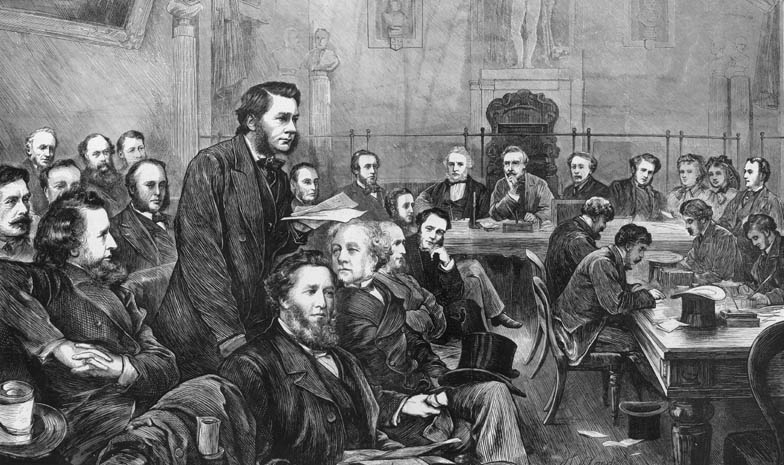
A Meeting of the London School Board in 1895
Note how increase in women elected to the Board and how they are seated so they can contribute to the proceedings compared to the previous image
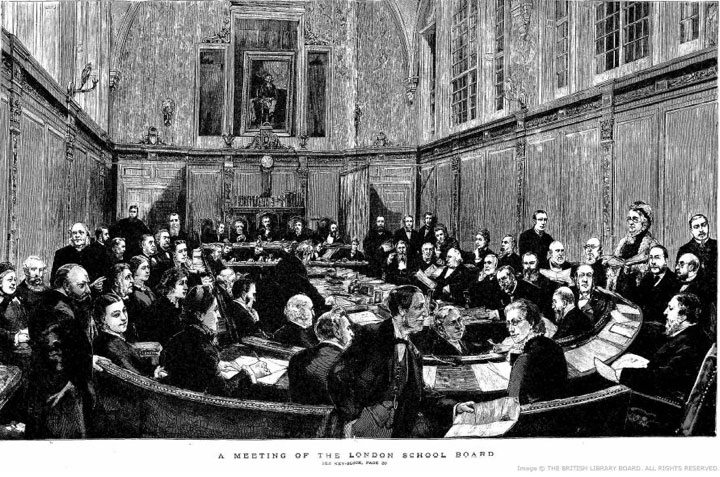
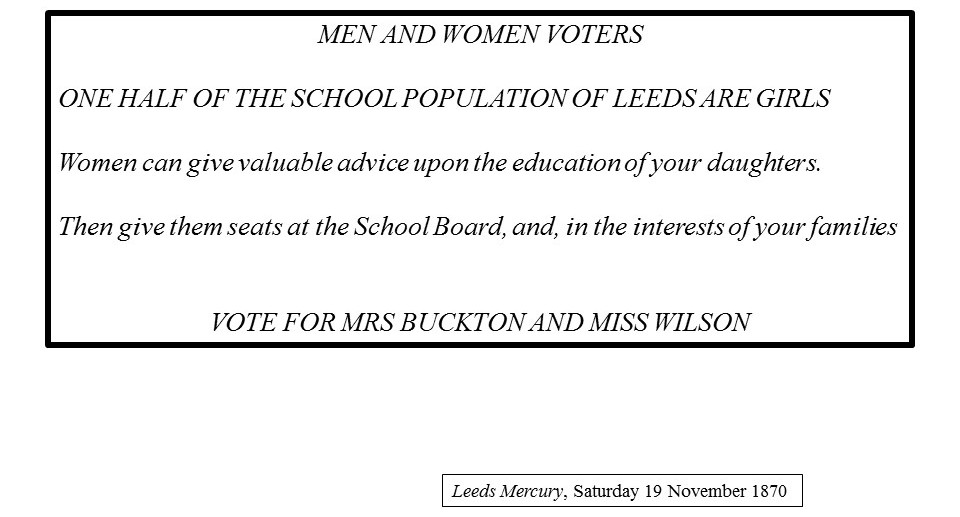
Leeds School Board 1870-1903
The Elementary Education Act 1869 was the first piece of legislation to acknowledge the State’s responsibility to provide a basic level of education to all children under the age of 10. It was drafted by William Forster, MP for Bradford.
The education provided was neither compulsory nor free at this stage.
The Act sought to create a national network of primary schools managed by local, elected, School Boards. The first elections were held in November 1869. They are important because
- Single and widowed women ratepayers were allowed to vote
- Any woman, irrespective of her marital status, could stand for election
- They are the first to be held by secret ballot
Three women stood as candidates in Leeds, Catherine Buckton, Constance Holland and Lucy Wilson but all were unsuccessful. Nine women were elected across England.
The Board’s first responsibility was to conduct a census of school age children and the number of available school places. Then they had to build enough schools to remedy the shortfall.
The census in Leeds revealed the worst shortfall of any town outside London. With a school age population of nearly 49,000 children, there were only 27,000 places in the existing schools.
Realising how long it would take to build new schools, the Board decided to take over the Zion Street School in Holbeck. It needed major refurbishment and new staff so a Management Committee was formed and two ladies were co-opted to assist them.
W. E. Forster - Portrait and in Vanity Fair
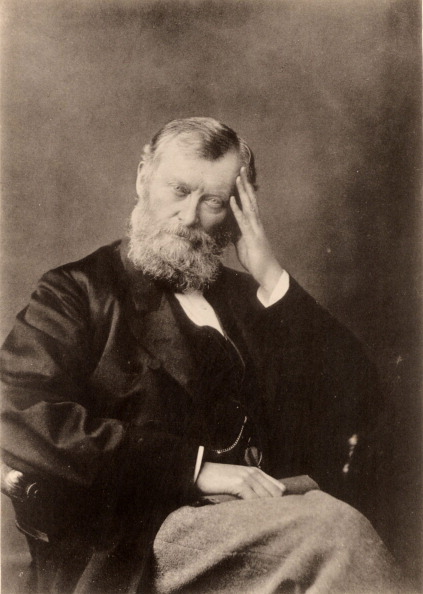

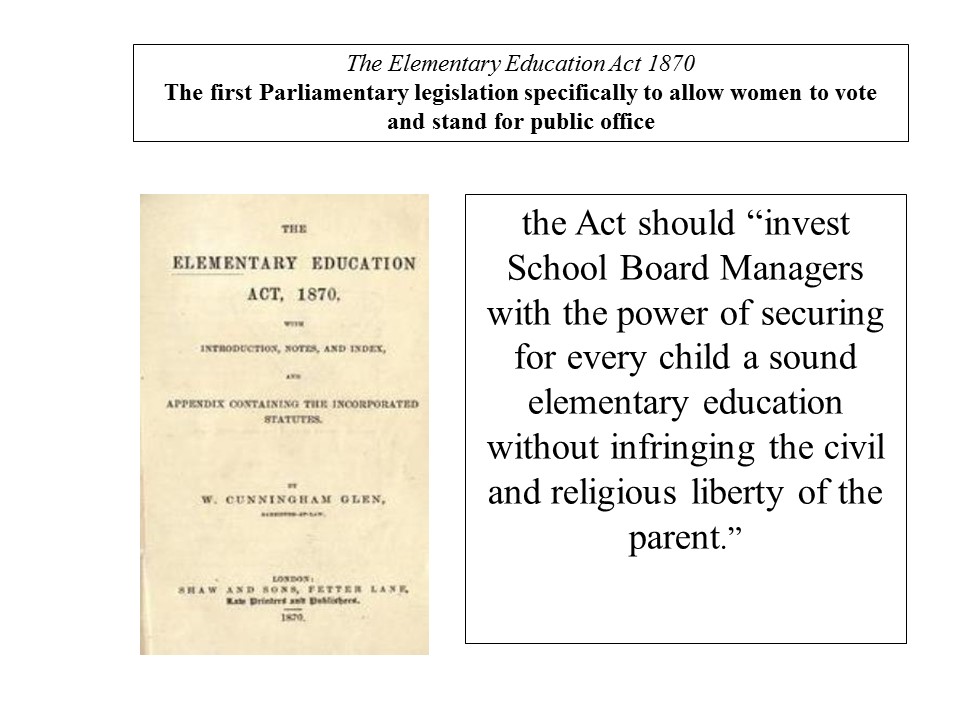
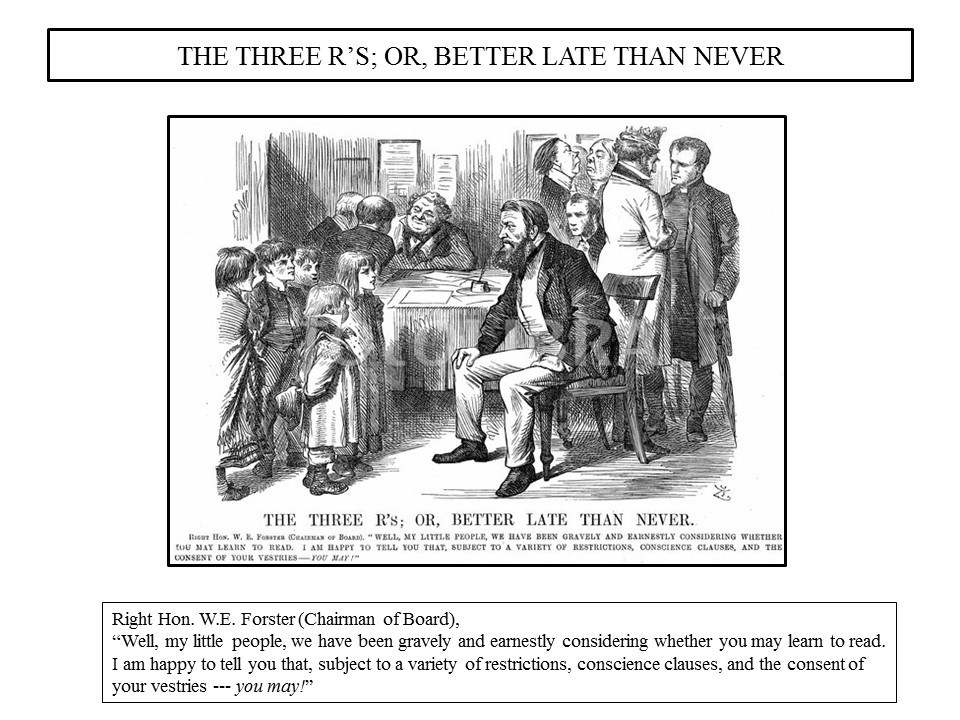
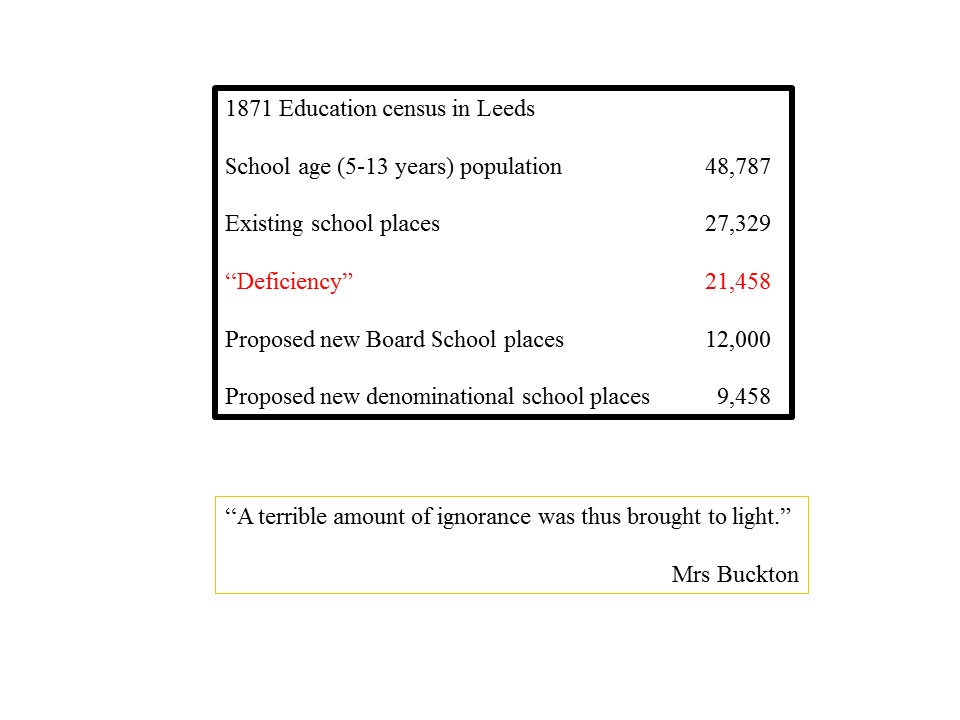

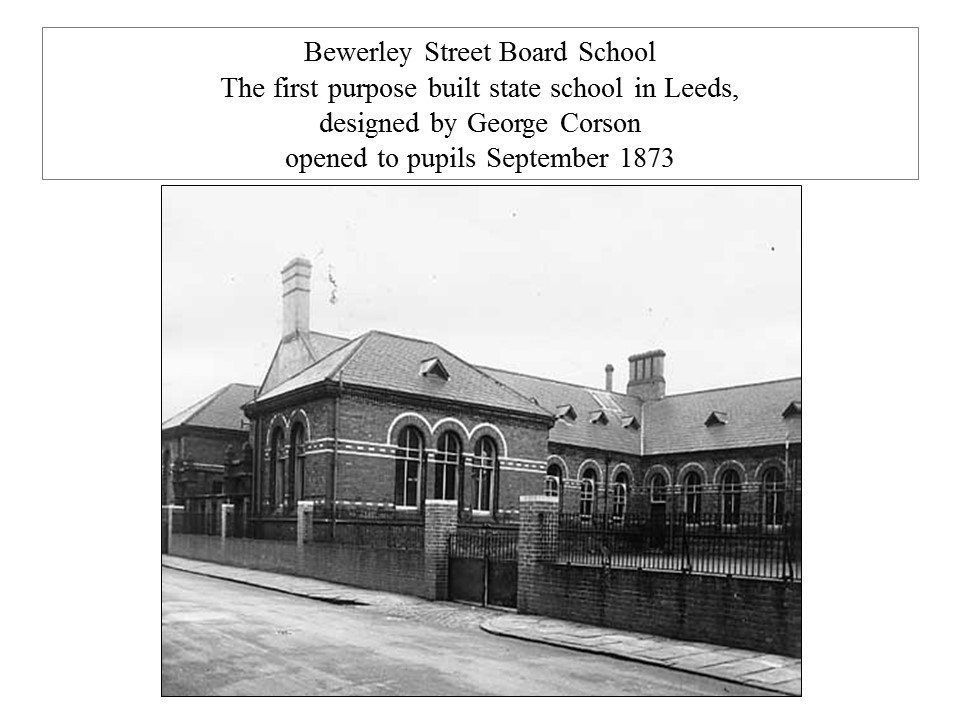
In 1903 when the School Boards were abolished, they managed:
- 157 primary schools
- 2 higher grade or secondary schools
- A teacher training college
- 21 Evening Schools
- Over 100 kindergartens
- Schools for the Blind, for the Deaf and for children with learning disabilities
- 4 schools for children deemed “beyond parental control”
State controlled education became compulsory to age 10 in 1880 but not free until 1891.

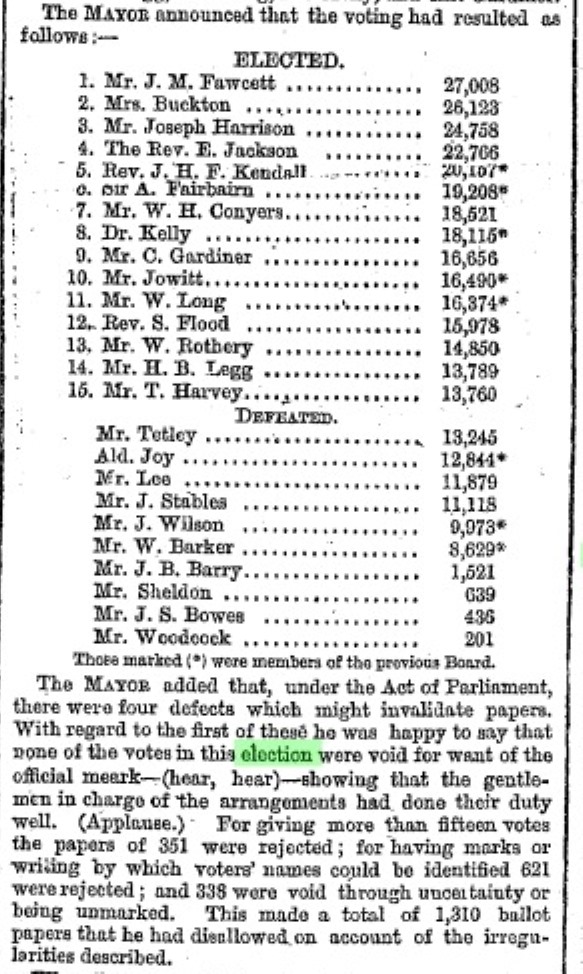
Extract from Leeds School Board Second Report being a Review of Proceedings from November 1873 to November 1876
Lectures on Laws of Health and Instruction in Cookery
During 1874 and 1875 Mrs Buckton generously undertook to instruct scholars and pupil-teachers, from the Board Schools in the neighbourhood of New Wortley, in Physiology and the Laws of Health. Notwithstanding that the attendance was purely voluntary, and after school hours, the room was well filled throughout the course; the young people reproducing, week by week on paper, the substance of the instruction. From the great interest excited in these lectures, Mrs Buckton was induced to publish them under the title of “Health in the House” and to give them orally again in another part of the town during 1875 and 1876, when from 200 to 300 elder scholars and pupil-teachers attended with unflagging interest. About sixty girls, who had received at these lectures a grounding in the nature of foods and the principles of heat, were selected for a course of lessons at the Leeds School of Cookery; and so satisfactory were the results considered, that the number attending has been subsequently doubled.
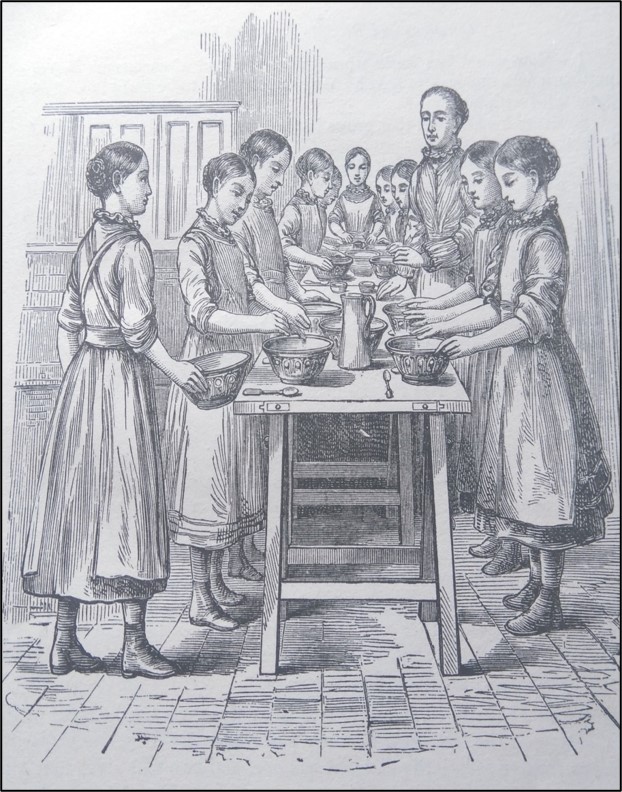
Interior of a classroom at Beeston Hill Board School, 1893, taken from the teacher’s desk
The school was built in 1880 to designs by R.L. Adams The class teacher was Miss Mary Walker (1858-1911) who trained as a pupil-teacher. Her father, Robert Walker, negotiated the purchase of the Elland Road sportsground for Holbeck Rugby Club in the 1890s
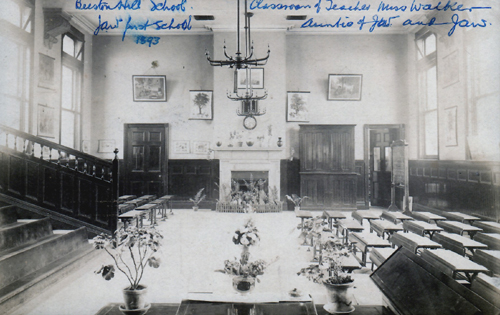
Leeds Board School Offices
Designed by George Corson, opened in 1876
The top floor had a high ceiling examination room for children and training pupil teachers. The Leeds Mercury described it as “one of the finest such buildings in the country”
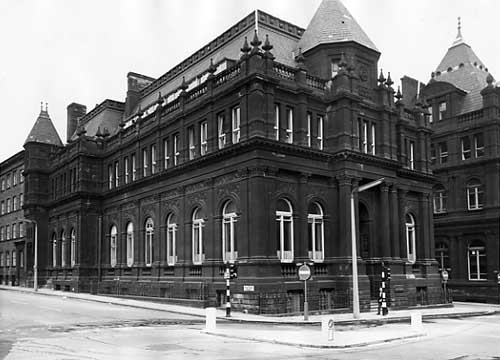
“what is wanted is a truly national system of …free schools…the working classes pay much more than any other class, in proportion to their means, for the education of their children.”
Catherine Buckton 1876
Children standing to attention in rows for a school assembly in the central hall
Darley Street Board School 1890s
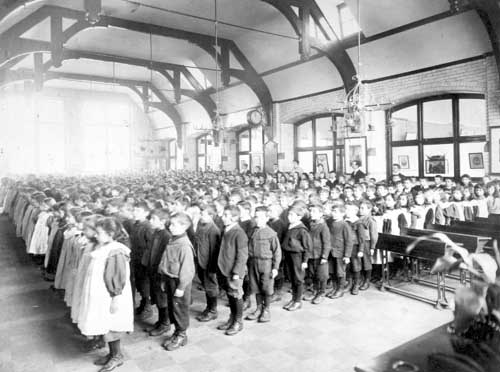
“Who will represent the female half of the population?
Hard work and business habits are required. In our own town there are thousands of women who carry on business for themselves and have in addition the responsibilities of a family to weigh them down, and yet the number of female bankrupts is curiously small.
If possible inefficiency is a reason for withholding power, proved inefficiency should surely not be allowed to command a monopoly of that power.”
“M” : letter in The Leeds Mercury, Wednesday 23 November 1870
Rhoda Anne Wreghitt Connon
(Mrs John Connon)
After Mrs Catherine Buckton resigned from Leeds School Board in 1881, the Liberal Party were unable to persuade another woman to stand for election in her place.
In 1893 the School Board co-opted Rhoda Connon, a member of the Women’s Liberal Federation. She was elected on the Liberal slate in November 1894 and served until September 1899, when Miss K Heaps was co-opted to replace her. Miss Heaps successfully stood for election and continued to serve on the School Board until it was disbanded in 1903.
Rhoda Connon’s special interests included schools for the variously disabled and the industrial schools for children deemed beyond parental control. She also served as a committee member for the privately-run United Institute for Blind, Deaf and Dumb in Headingley. After resigning from the School Board, she continued as a Lady Visitor to the Thorpe Arch Industrial School for Girls, opened in 1896 to train “delinquent” girls for domestic service.
Leeds School Board first expressed their concern about the feeding of destitute children at Board Schools in 1893. In a return to the Department of Education, they estimated there were 1,551 such children and suggested Parliament should empower local Councils to provide one hot meal per day. When this was refused, Rhoda Connon established a “School Feeding Fund” through public donations. In January 1894, she reported that the Fund had provided over 30,000 meals in the previous six months.
The School Board also established 25 science and art scholarships, open to boys and girls, “funded by the generosity of ladies and gentlemen interested in education.” Rhoda Connon contributed £15.
Information on Teaching Staff in Leeds Board Schools
Extracted from the 8th triennial report of the leeds school board 1891-1894
| Teaching Staff | Male | Female | Totals 1894 | Totals 1891 |
|---|---|---|---|---|
| Head Teachers Trained Untrained |
56 7 |
53 34 |
109 41 |
103 42 |
| Total Head Teachers | 63 | 67 | 150 | 145 |
| Certified Assistants Trained Untrained |
156 25 |
184 91 |
340 116 |
252 127 |
| Total Certified Assistants | 181 | 275 | 456 | 379 |
| Ex Pupil Teachers | 54 | 283 | 337 | 270 |
| Pupil Teachers | 48 | 296 | 344 | 301 |
| Candidates | 28 | 87 | 115 | 93 |
Total Teachers of All Grades |
374 |
1,028 |
1,402 |
1,188 |
In addition to the teaching staff, there is a visiting staff consisting of 14 cookery teachers including a superintendant.
The increase in the number of cookery teachers from 6 (in 1891) to 14 has been attended by two advantages. It has brought under instruction the girls of the Fourth standard as well as the higher standards, and it has increased the efficiency of the instruction by reducing the size of the classes.
One-twenty-fifth of the entire number of girls learning cookery throughout the Kingdom – in denominational schools as well as Board Schools – are to be found in the Leeds Board Schools.
The bright faces and eager manner of the children as they move about their work shew how thoroughly they enjoy the cookery lesson. Indeed, there is no more popular lesson in the week, and none likely to prove more useful to the girls in after life.
The School Board Elections 1894
“Mrs Connon then addressed the meeting, and emphasised the importance of women being represented on the Board. There were a great many girls in their schools, and questions often arose upon which a woman could with advantage be consulted.
Three quarters of the teachers under the Board were females, which was another reason for a woman being amongst the rulers. Again, the women of Leeds had for six years past shown an increasing interest in political matters, particularly the education question.
She came forward as a representative of the women of Leeds but also as a fully approved and chosen member of the Liberal eight. She was put forward by the Liberal Federation to take the women’s vote of the city.
The Liberal eight had the very greatest claim to continue the management of the Board Schools, not only because they had so efficiently carried on the work of educating the children, not only because of the beautiful buildings they had erected and the cheerful conditions of training they had arranged, but because they sought but one object, and one only – the improvement of the schools.
The first love of the Church-Tory party was of necessity their own schools, and it followed as a matter of course that in educational matters with them the Board Schools must take second place. It was not at all likely that they would have the same earnest purpose or achieve the same effective results as those who had as their first consideration the Board Schools.”
Extract from the Leeds Mercury 8 November 1894 page 8
Gentlemen
Your remarks on Tuesday anent the Vicar of Kirkstall’s ungentlemanly attack upon the esteemed lady member of the Leeds School Board are timely and appropriate.
I attended the meeting at which the reverend gentleman took the chair and, in his opening remarks, he proceeded to pour forth a volume of scorn and sneers at Mrs Connon. As far as I am aware no report of his speech appeared in the morning papers.
I am surprised to see that he repeated his observations almost word for word - referring to Mrs Connon as the “New Woman” – in another place on Saturday evening thus no allowance can be made for him having spoken unpremeditatedly on either occasion.
If the “definite religious teaching” for which he is fighting is to embody no more of the spirit of religion than exemplified in his bitter partisan speeches, then better, far better (and I say it as a member of the Church of England) that the form also should be banished from our schools. Yours respectfully
A W Griffiths
Letter in the Leeds Mercury, 8 November 1894,
the elections to the School Board and Mrs Rhoda Connon
Notice in the Leeds Mercury concerning the forthcoming School Board elections – 10 November 1894
Leeds School Board had 15 members so each voter had 15 votes. A voter could use all 15 votes for the same candidate; this is called “plumping” and was encouraged by political parties and interested groups such as the Clergy to ensure a like-minded majority on the Board.
We find that, owing to a careless reading of the posters bearing the address of the Liberal Eight, the idea has sprung up in some quarters that the electors of each ward are invited to divide their votes between Mrs Connon and the male candidates allocated to that ward. This error, fostered by Tory canvassers, must be put right.
The women are called upon to plump fifteen for Mrs Connon and the men to plump fifteen for the male candidate.
The only exception is in New Wortley, where both women and men are asked to vote for Mr Baines.
Canvassers should be very careful to instruct voters on these points, as a loyal adhesion to the plan laid down by the Liberal Federation is necessary to secure the desired end – the return of the whole Liberal Eight.
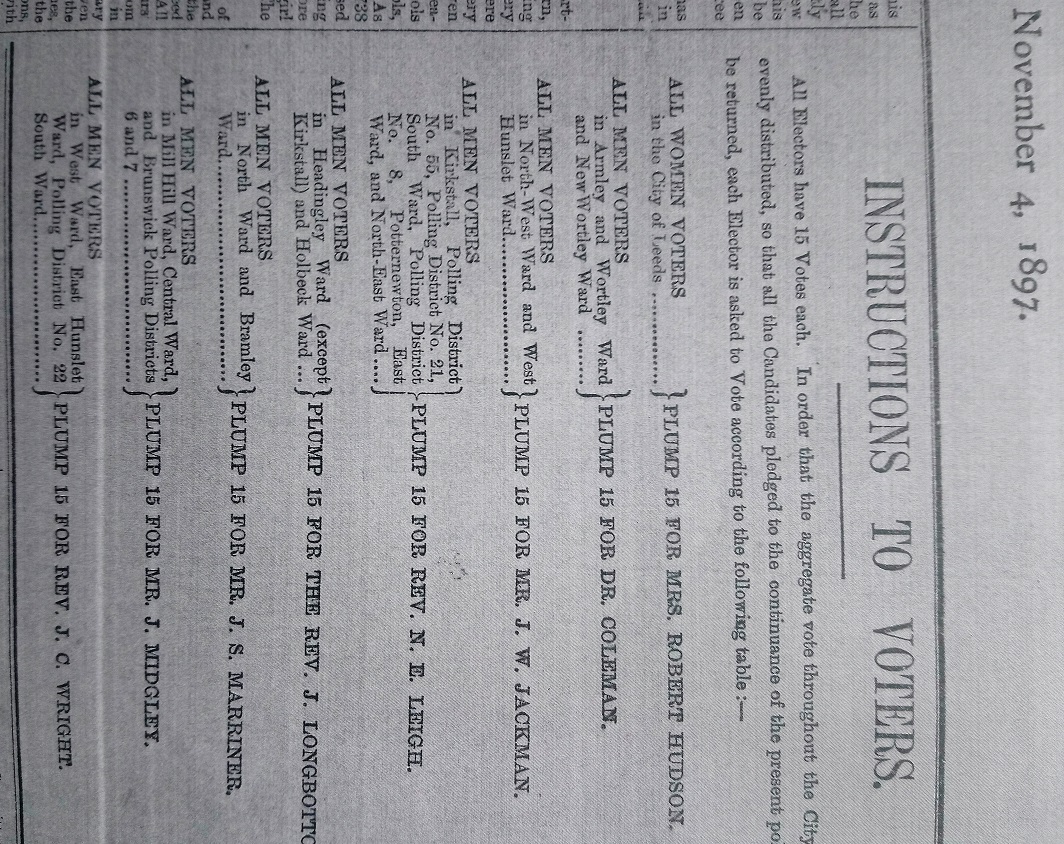
Gipton Board School, Harehills Road, 1890s
Opened 14 October 1897, closed as a school 1992
Now The Shine Business Centre, a local community initiative offering facilities to small and start-up business, social enterprises and the arts
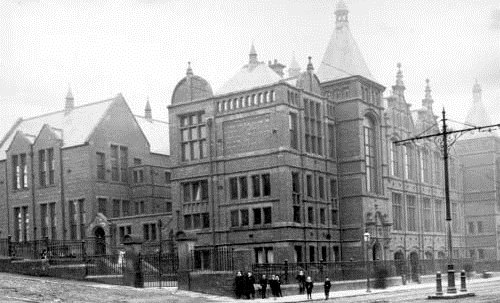
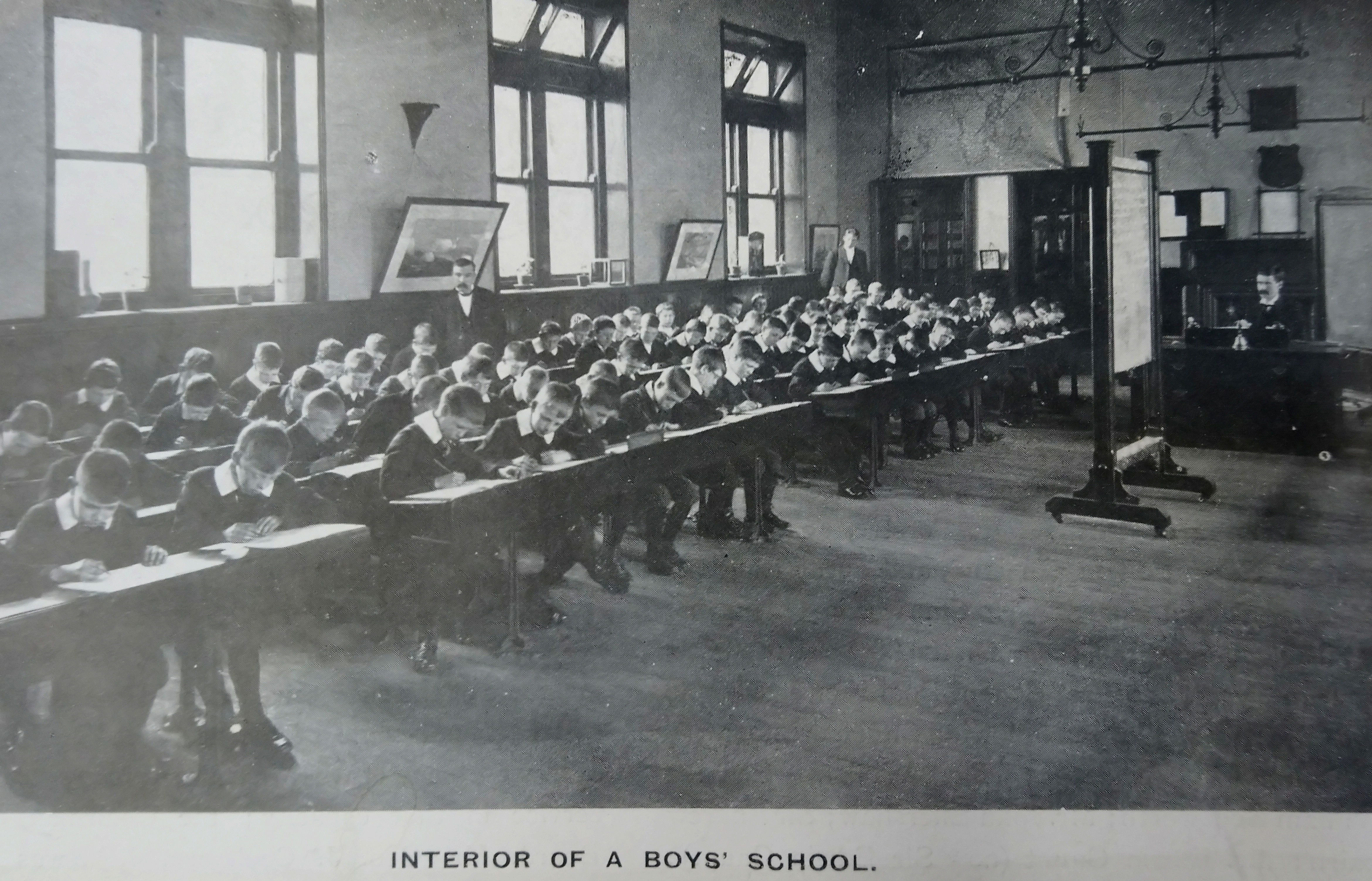
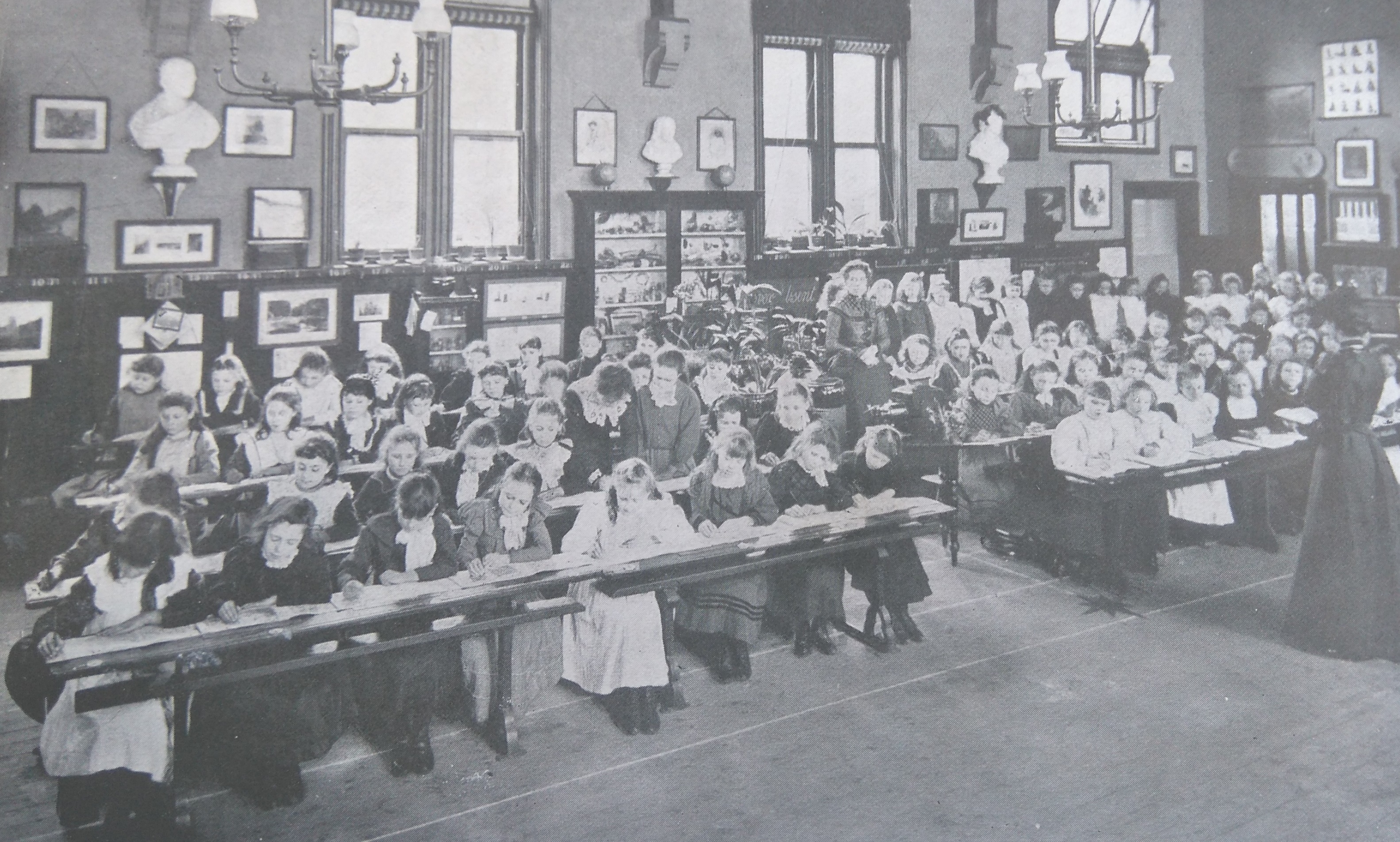
INTERIOR OF A GIRL'S SCHOOL
Then up and spoke a holy man
‘Stop a bit, my friend! The Church’s ban...
Enough to wither and blast the nation,
Rests upon godless education.Reading and writing are all very well
Published in The Leeds Mercury, Saturday 25 November 1871
But better by far for the boy’s salvation
He lived in rags and died in a gutter
With only his creed and a prayer he can mutter,
Than learn to cipher and write and spell
And the list of decent citizens swell,
Honestly earning his bread and butter
But live and die an infidel!